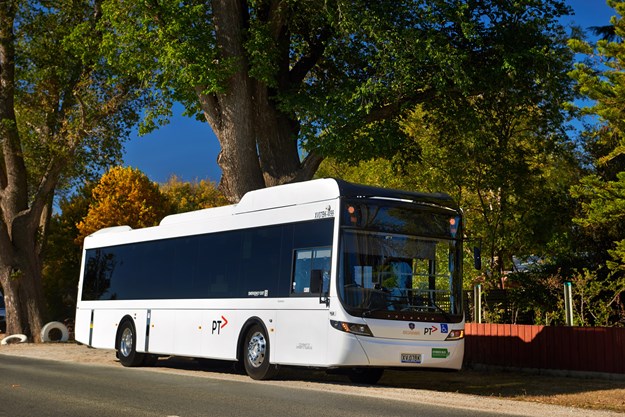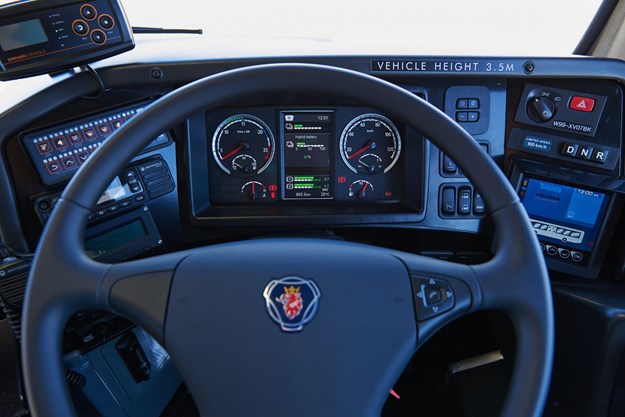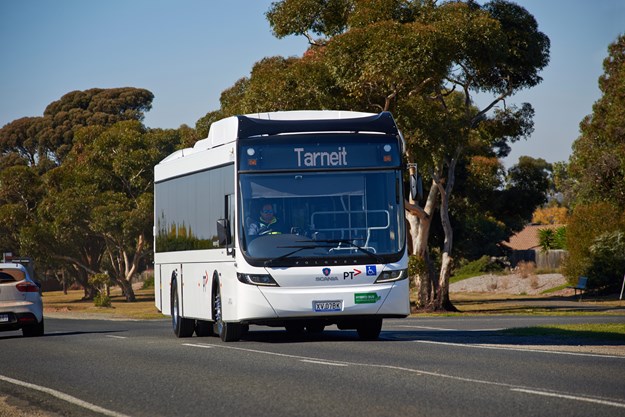IN EXCESS OF half a million connected Scania vehicles are rolling world-wide, continuously sharing data for analysis – with 1486 of them being connected Scania buses and coaches operating in Australia, Scania Australia confirms.
More than just a fleet management tool, Scania’s data collection delivers a powerful competitive advantage to its customers when they are negotiating for new business, the company explains.
A decade ago, Scania took the lead by introducing a communication device as standard in all its vehicles, it says. This enabled customers to achieve improved uptime, performance and efficiency across their operations, and for Scania to collect scientific data about product use, as well as analysing logistics patterns, it explains.
Scania’s lead product manager for Fleet Management Services, Venugopal Gangaiah, says the importance of having large numbers of vehicles connected cannot be over-stated, and considers this to be an important milestone for Scania.
“It is vital in our journey towards becoming a sustainable end-to-end solution provider of transport,” Gangaiah said.
“Scania wouldn’t be where it is today in terms of knowledge about products and customer behaviour, without the first vehicle being connected some 20 years ago making this possible.
“The Scania fleet management portal and later launching our own communicator in 2009 were also strategically important milestones – not to mention recognition through the various telematics awards collected by Scania over the last decade.”
LONG STANDING
In Australia, Scania has been promoting its fleet-monitoring services for several years.
“Scania customers who monitor the data produced by their vehicles and drivers have a far clearer understanding about how their assets are being used and with what degree of efficiency and productivity,” said Richard Bain, Scania Australia’s Services Portfolio manager.
“The data generated and analysed by the fleet-monitoring system really gives them a bird’s-eye view of their costs and highlights where money is being wasted or where they can make changes to improve their total operating economy.
“Drawing on the global data relating to usage, speed, loading and driver behaviour, Scania is better able to predict service needs and suggest preventative maintenance plans in order to ensure the operators benefit from, and achieve, the highest possible uptime,” Bain said.
MILESTONES
Scania reached the 100,000 connected vehicles milestone in 2014, and the numbers have risen at a rate of close to 60,000 annually to pass 500,000. Since 2019, Scania has also offered this vital connectivity feature to users of its industrial and marine engines, the company explains.
Although all new trucks and buses leave the factory equipped with a communicating device, customers have to sign a contract before Scania can process their vehicle data, and then access commercial service packages at various levels to see the data, Scania explains.
The entry level is the ‘monitoring package’, where customers receive e-mails on a weekly, monthly and yearly basis, showing basic vehicle performance and consumption.
Most popular of the more advanced service packs is the ‘control package’, says Scania, supplying access to the Fleet Management Portal (FMP) and the Fleet app. It gives more detailed information about efficiency, productivity, safety and environmental impact of the business, not possible some years earlier, it states.
The information from more than 90 data parameters are not enough in themselves, though; fleet owners need to make use of this intel through Scania to really leverage the benefits, the company explains.
MORE TO COME
Customers can currently monitor their vehicles based on engine or fuel use. With increasing electrification of transport, further milestones are on the horizon, Scania states.
Upgraded hardware and software will also make tracking of battery electric vehicles’ (BEV) performance possible, it adds.
“The existing Scania Communicator will be upgraded soon, enabling quicker and more advanced data collection and analysis,” Gangaiah said.
“This will result in even more modular and tailored services and is a prerequisite for reaching our science-based targets (SBTi).
“Emissions data reveal tank-to-wheel facts by default today in the fleet portal, but soon it will also be possible to view the well-to-wheel figures – another milestone to look forward to,” he said.
Photography: courtesy Scania Australia





.jpg)
